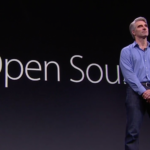In 2023, AI startups achieved a remarkable milestone by raising close to $50 billion. Industry giants like OpenAI and Anthropic were at the forefront, each securing substantial multi-billion dollar investments.
This unprecedented growth in investment began to gain momentum at the tail end of 2022. It was marked by significant funding rounds for several startups, such as Stability AI, the video and audio editing AI tool Descript, and the AI-driven content platform Jasper.
This momentum carried over into 2023, seeing over 70 instances of funding rounds surpassing the $100 million mark, as per data from Crunchbase.
A significant catalyst for the market was Microsoft’s substantial $10 billion investment in OpenAI in January. Consequently, the valuations of AI firms, including Anthropic and OpenAI, experienced a steep increase throughout the year.
Thanks to Google and Amazon, each of which invested $2 billion and $4 billion respectively, Anthropic’s valuation now resides somewhere between $20 and $30 billion. The AI startup has recently unveiled its latest and greatest AI model Claude 3 to rival GPT 4.
Inflection AI has also updated its LLM prowess with the introduction of Inflection 2.5, which boasts less than half of the training resources required compared to other models. The startup has recently raised $1.3 billion at a valuation of $4 billion. OpenAI witnessed its valuation skyrocket from $29 billion to an impressive $86 billion.
The investment trend saw a notable uptick on a global scale as well, with Paris’s Mistral AI and Germany’s Aleph Alpha concluding substantial funding rounds, each amassing up to $500 million.
It remains unclear whether this trend will continue into 2024 or not, but it is more likely than ever as tech giants are competing to dominate the AI market. Microsoft, OpenAI, Google, and other industry titans are investing heavily in infrastructure (cloud), models, and applications.
For instance, OpenAI and Google are expanding their portfolio beyond chatbots to include capabilities like image generation, web browsing, and potentially video creation. This expansion is gradually encroaching on the functionalities traditionally occupied by startups. With their significant financial resources, these tech giants are well-equipped to absorb the potentially high costs associated with the current inefficiencies in generative AI technology.






